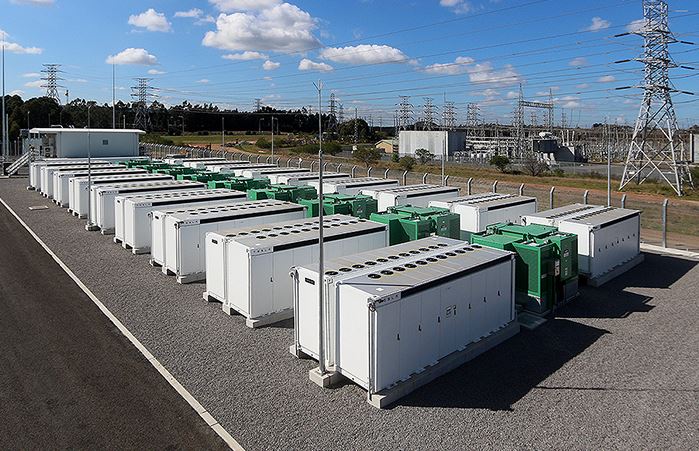Lumea, the commercial arm of AustralianMega transmission network operator TransGrid, said commissioning of the $61.9 million Wallgrove Grid Battery has begun after it achieved registration with the Australian Energy Market Operator (AEMO) earlier this week.
The 50 MW/75 MWh lithium-ion battery has been installed adjacent to Transgrid’s Wallgrove substation in Western Sydney and Lumea anticipates it will deliver important lessons with large-scale batteries expected to play a big role in firming and balancing Australia’s electricity system as the nation moves towards a future energy mix with higher penetration of renewable energy.
Featuring 36 Tesla Megapack units connected to transformers and with a direct feed to the National Energy Market (NEM), the lithium ion battery energy storage system will trial the use of ‘synthetic inertia’ as a service as well as provide grid support and system strength to the energy network.
Lumea said the Wallgrove battery will demonstrate how batteries can be used to respond to a frequency event, and how often it is needed to provide fast-frequency response and system inertia – termed synthetic or digital inertia when delivered by battery storage. It will also demonstrate how batteries can be used as a new source of dispatchable power, how much electricity it is able to store and dispatch under different conditions.
Lumea spokesman Nigel Buchanan said the battery will also be monitored to see how it responds to frequency deviations that occur as a result of incidents on the network.
“High-speed monitors on the network pick up the data and we expect to see a very fast, anticipatory response from the battery,” he said.
Buchanan said current batteries work retroactively, so that when frequency spikes or drops and moves outside a particular frequency band, then the battery is triggered and provides active power into the network to rectify the frequency deviation.
New technology in the Wallgrove battery is expected to detect a change in the property of the electricity flowing in the network.
“We’ll be monitoring to see how well the battery anticipates that within half a second that the frequency will have moved outside the particular band and automatically kicks in to arrest that change and hopefully moderate the frequency deviation and head off the incident,” Buchanan said.
Popular content
“The point is we already know that Australia can build synchronous condensers for hundreds of millions of dollars, but we want the data from Wallgrove to say, batteries do work as an alternative, preferable solution.”

Modeling by TransGrid and Lumea suggests within the next energy market regulatory period, between 2024 and 2029, New South Wales is likely to need 240 MW of battery inertia to address the gap left once fossil fuel generators are retired. At 50 MW the Wallgrove battery will go some way to helping.
“What we are proving with the Wallgrove battery is the complementarity of the battery’s role not just for market solutions such as energy storage and dispatch, but a simultaneous role for network operations such as inertia,” Buchanan said.
“When these batteries are operating in ‘inertia mode’, it’s literally less than a second up to no more than six seconds, but you need a huge amount of power for that very short period.
“What that means is we can provide those short bursts without interrupting provision of other market services.”
The Wallgrove Grid Battery is expected to be fully operational in early 2022.
TransGrid will own and maintain the battery while Iberdrola, which also operates the Lake Bonney big battery in South Australia, will provide commercial services to the energy market, including dispatch control and FCAS and wholesale energy markets.
This content is protected by copyright and may not be reused. If you want to cooperate with us and would like to reuse some of our content, please contact: editors@pv-magazine.com.



By submitting this form you agree to pv magazine using your data for the purposes of publishing your comment.
Your personal data will only be disclosed or otherwise transmitted to third parties for the purposes of spam filtering or if this is necessary for technical maintenance of the website. Any other transfer to third parties will not take place unless this is justified on the basis of applicable data protection regulations or if pv magazine is legally obliged to do so.
You may revoke this consent at any time with effect for the future, in which case your personal data will be deleted immediately. Otherwise, your data will be deleted if pv magazine has processed your request or the purpose of data storage is fulfilled.
Further information on data privacy can be found in our Data Protection Policy.